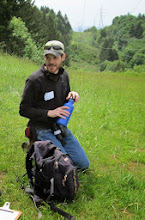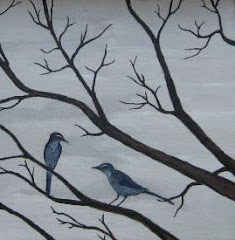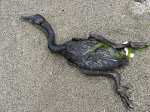Cacklers are further divided into four subspecies, three of which winter in my part of the world. The smallest and easiest subspecies to identify (in my opinion) has been redundantly named the cackling cackling goose (Branta hutchinsii minima). The two larger subspecies are the Taverner's cackling goose (Branta hutchinsii taverni) and the Aleutian cackling goose (Branta hutchinsii leucoparia).

Cacklers resemble Canada geese but are only slightly larger than mallard ducks. To me, they look like large footballs with short necks and small heads.
Adult cackling cackling geese have dark purplish-brown breasts, while juveniles are lighter in color. Some have white rings at the base of their necks, but most do not.
The cackling cackling goose population nests on the northern coast of Alaska and migrates south in the fall. Their wintering range was mostly in California until the subspecies declined to endangered status. The population has since since recovered, but now primarily winters in the Willamette and Columbia Valleys of Oregon. Those of us who live here are therefore among the only people in the world that have a chance to view this small goose. The cackling cackling goose is therefore a subspecies of our own.
While birders and hunters may welcome these geese each winter, some farmers and ranchers here may wish cacklers would return to California for good. I recently noticed how a flock of cacklers can descend on a field and remove much of its cover with army ant-like efficiency.

Here is the freshly planted grass field south of our apartment last Friday when I first noticed a flock of geese.

This is how the same field looked the next Monday morning. I hope the landowner does not mind the grass removal.

You can see here where the geese stepped on the grass, knocking away the dew, and proceeded north, picking the young grass leaves along the way.
 The right side of the patch had geese, while the left side did not.
The right side of the patch had geese, while the left side did not.It seems that managing population growth while minimizing crop damage by this and other cackling geese subspecies will be a challenge. I hope that the flocks can find enough conflict-free food in our valleys so they will return for many winters to come.







No comments:
Post a Comment